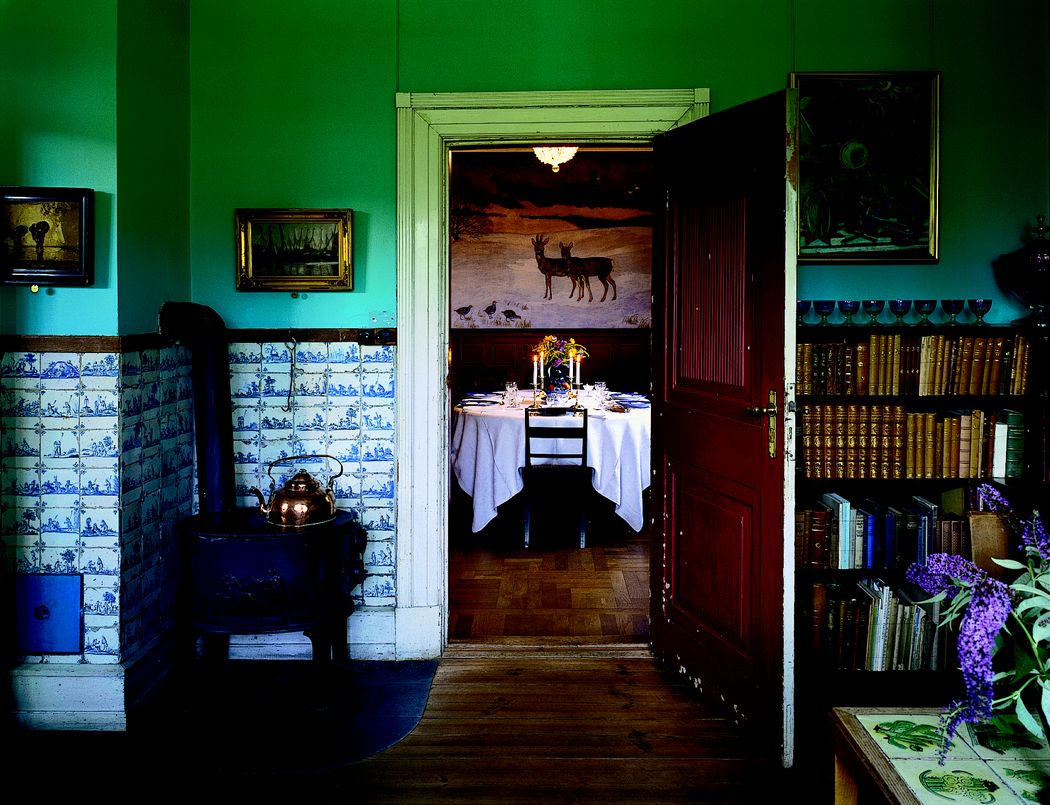Inside the Artist's Studio
This blog is part of a series. We asked curators from studio museums across Europe to respond to the question 'How do you keep the artist's spirit alive in a studio museum?'.
An authentic, unaltered artist home or studio (such as the Johannes Larsen Museum, Denmark) holds the risk of presenting the artist and his studio as a closed unity, ignoring the fact that you cannot preserve the changing character of a home or studio through decades of the life and work of an artist. Also the inspiration and influence coming from current trends of the time, other artists, and so on, risks being ignored.
Without the possibility of broadening the picture, an artist's studio museum risks emphasizing the singularity of the artist, forgetting that he or she was part of a certain time and a history, that to a very high degree contributed to the scene, the topics, the style and many more aspects of their art and life.
The Danish painter Johannes Larsen died in 1961, and the home and studios of Johannes and Alhed Larsen in Kerteminde have been open to the public for 30 years. The daughter-in-law of Johannes Larsen lived in the house until her death in 1984 without making many changes. Since then, the rooms have to a large extent been maintained as they were when the family left the houses - or they have, in some cases, been re-established in cooperation with family members or other witnesses to the past, and with the help of photos and paintings. Thus the home and studio now present an authentic glimpse of the life and world of Johannes and Alhed Larsen.

The interior of the Johannes Larsen Museum, Denmark. Photo: Jens Frederiksen
At the Johannes Larsen Museum we aim to offer the public the impression that they are guests in a living home of an artist, not visitors to a museum. Except for a few locked doors, the visitors are free to go where they like. Signs are reduced to a minimum, but visitors can carry around with them an information sheet with a list of the paintings, corresponding to discreet numbers next to each painting on the walls. All year round flowers and leaves from the garden are brought in and placed in vases on tables and windowsills, thereby adding to the impression of a living home. Volunteers at the museum take the role of hosts and hostesses of the house, welcoming the museum guests and introducing them to the place.
Through visitor surveys and extensive responses from our guests we know that a visit to the home and studio of Johannes Larsen and his wife has a great emotional impact, which draws a high degree of attention and interest from the individual guests. But it does not necessarily create an understanding of the complex context of the life and art of Johannes and Alhed Larsen.
Therefore the home and studio do not stand alone at the Johannes Larsen Museum, as the museum site is enhanced with an extensive exhibition building providing additional perspective.
Already in 1990 a building for the art collection and temporary exhibitions had been constructed next to the house. In 2001 this was extended to provide even more space for exhibitions that would put the art of Johannes Larsen into a broader context – comparing him both with other contemporary painters, and with artists from other periods and schools who had a comparable interest in nature.
By having a separate building with a collection that puts Larsen's art in perspective, as well as a programme of temporary exhibitions focusing on a variety of different issues, the Johannes Larsen Museum avoids the risk of limiting the art of Larsen to a closed unity. Instead it facilitates the interpretation of the multifaceted aspects of the artist's life and work.
This blog is part of a series. We asked curators from studio museums across Europe to respond to the question 'How do you keep the artist's spirit alive in a studio museum?'.